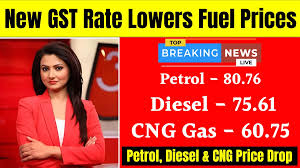Why did the price of petrol & not decrease after the GST rate reduction?
Since fuel remains outside the GST regime, its major taxes excise, VAT and state levies must be reworked separately to produce a noticeable drop. Even with a favourable GST environment, fuel companies and state governments would need to absorb losses in tax revenue or reallocate tax burdens elsewhere.In September 2025, the Indian government launched a sweeping reform of the the Goods and Services Tax framework what has been widely dubbed “GST 2.0.” The idea behind this restructuring is to simplify a complex tax structure and to pass more benefits directly to consumers. Under the new regime, many previously distinct GST slabs have been rationalised.
The old four?rate structure is replaced by a leaner set of rates: 5 percent for essentials, 18 percent for standard goods and services, and a higher 40 percent slab for luxury and sin goods. This change has implications across the economy, from daily consumables all the way to vehicles and energy.
While petrol, diesel, and CNG have long stayed outside the purview of GST bearing instead excise duties and state VAT the reforms extend into the auto sector and other fuel?adjacent domains, prompting hopes of indirect relief on fuel prices.
How Fuel Pricing Works Now
To understand how GST might affect petrol, diesel, and CNG prices, it helps to look at current tax structures. Petrol and diesel are currently subject to central excise duties, state-level VAT or sales tax, and various cesses and surcharges. For example, as of an April 2025 notification, the central excise duty on petrol was revised to ?13 per litre, and on diesel to ?10 per litre. These excise changes adjust only one piece of the tax mix. Many other components remain in place at the state and local levels.
Because fuel has been kept outside GST, the different states impose varying rates of VAT or sales tax, which leads to price variations across states and even between cities within the same state. The federal government has argued that bringing fuel entirely under GST would jeopardize state revenues, making the transition politically and fiscally tricky.
In public statements, the Petroleum Ministry has said that unless global crude oil prices drop significantly, there is limited room for immediate reductions in fuel prices. That means any relief consumers see will likely come through tax reform rather than through a drop in the base cost of oil.
What the Reforms Announced
Under the new GST 2.0 structure, the automotive sector is one of the key beneficiaries. The GST Council approved lower tax rates on small cars, motorcycles, and three?wheelers so that petrol, CNG, and LPG cars having engines up to 1,200 cc (and length not exceeding 4,000 mm) will now be taxed at 18 percent GST, down from 28 percent earlier. Diesel cars with engines up to 1,500 cc (also under 4,000 mm in length) will also come under the reduced 18 percent slab. Three?wheelers and motorbikes (below certain engine capacities) are similarly shifted to the 18 percent slab. Larger or luxury vehicles that exceed set engine size or length limits will fall into the 40 percent slab.
These changes eliminate many intermediate cess and surcharge components that had layered onto vehicle costs. For mainstream entrants like popular hatchbacks and compact sedans, that translates to meaningful cuts in ex?showroom and on?road prices.
Although the reforms target the auto and vehicle sector more directly, their ripple effects may be felt in fuel consumption patterns and indirectly in fuel pricing.
